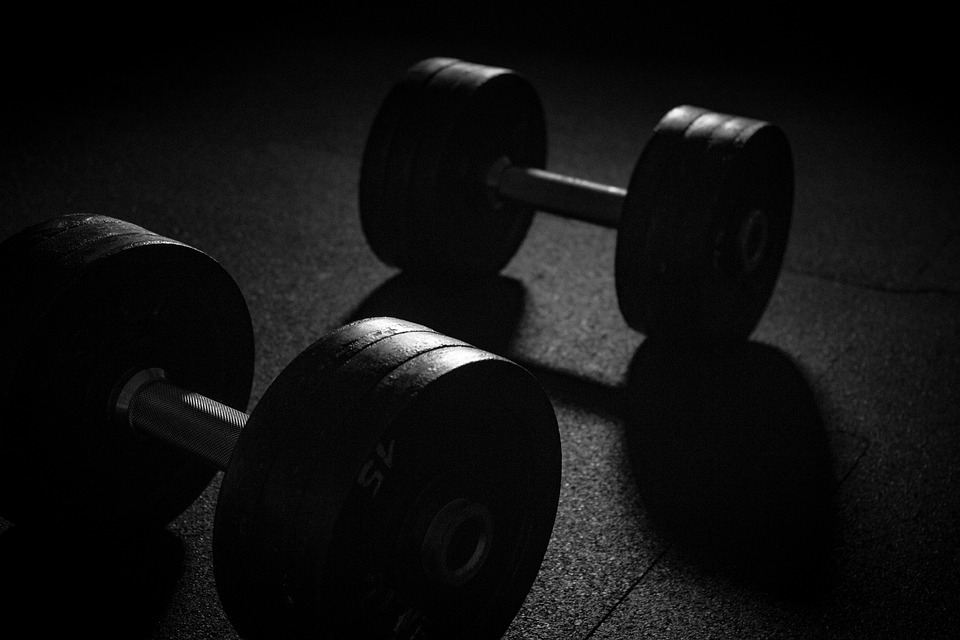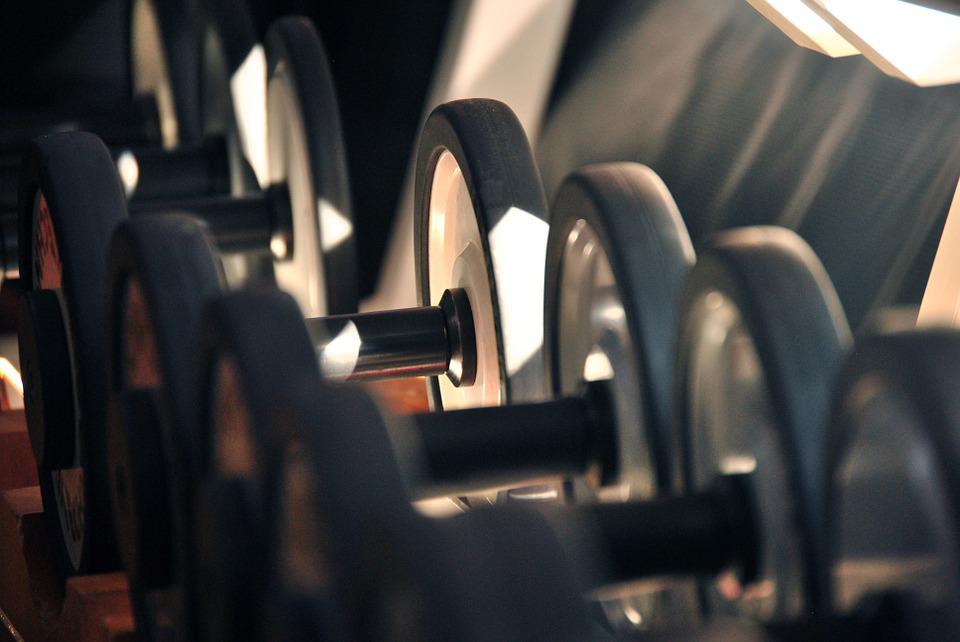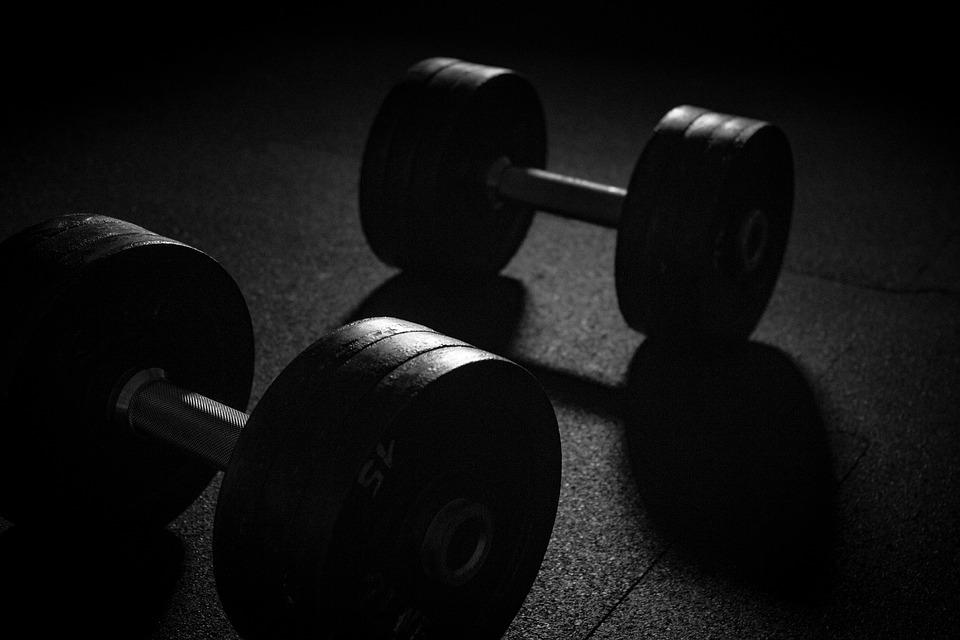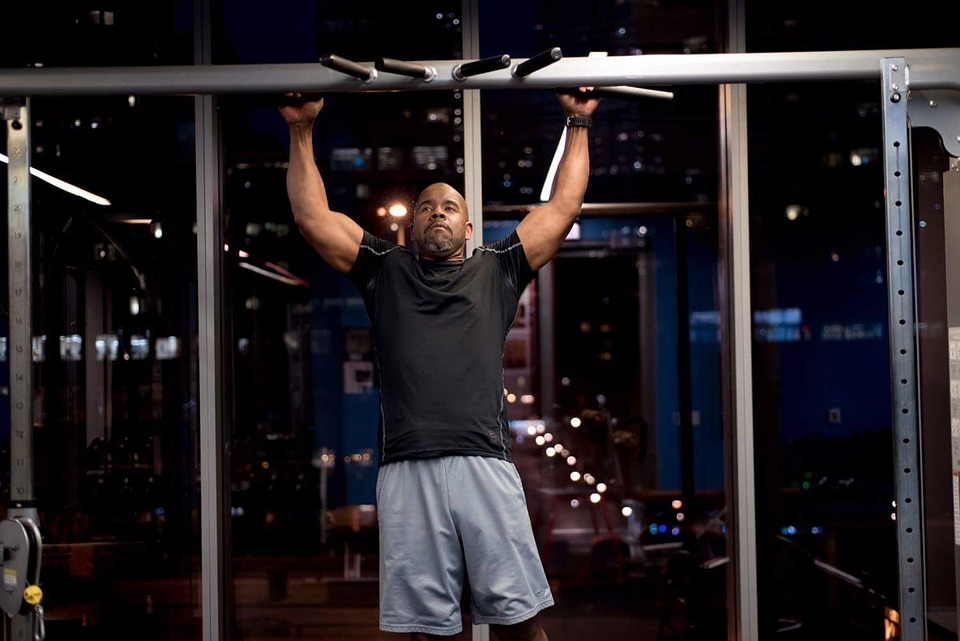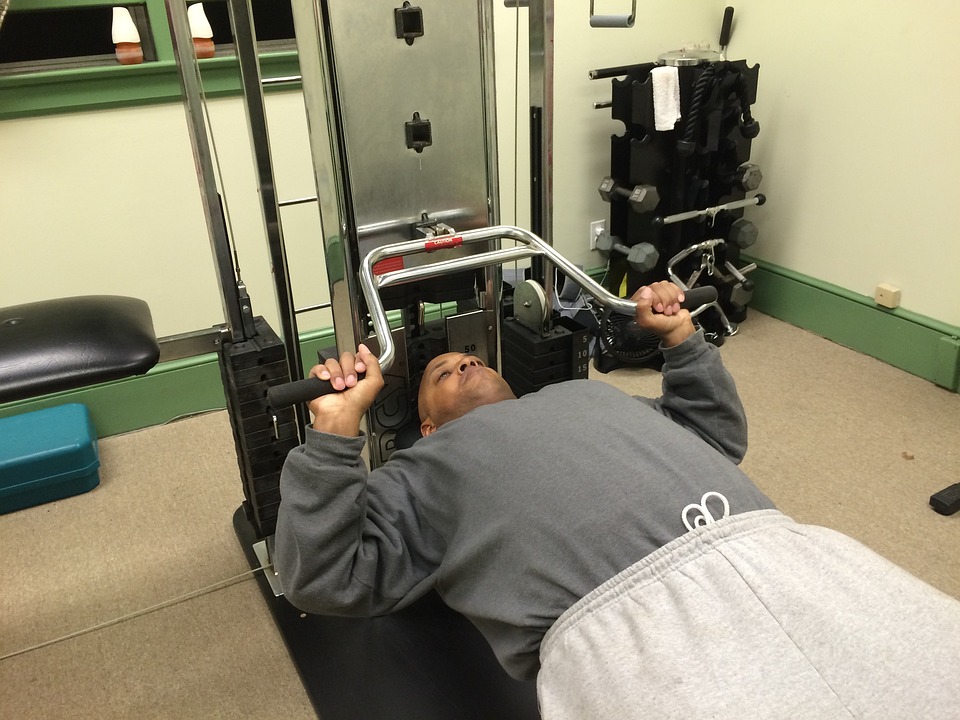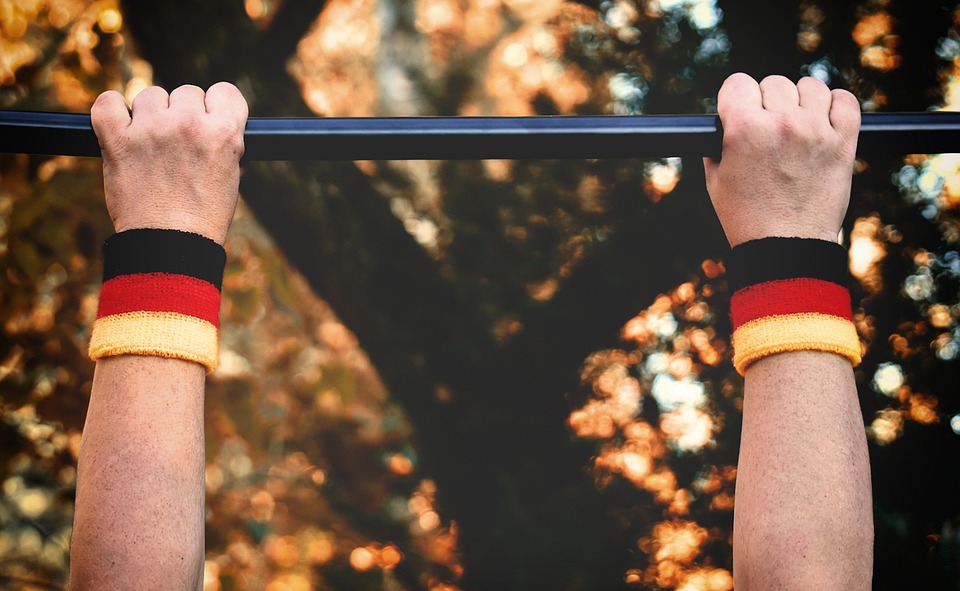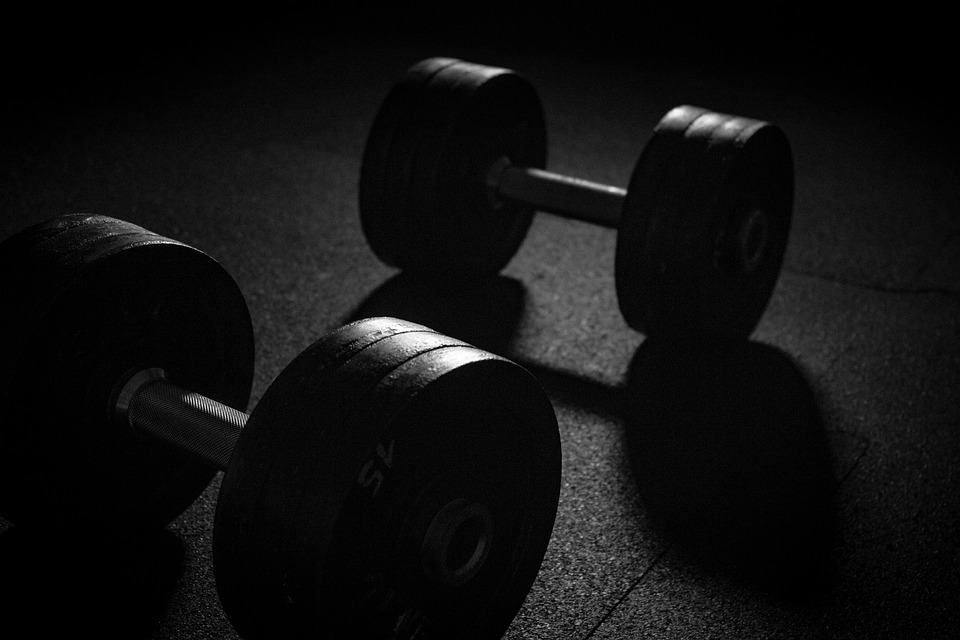
There is no other exercise that can compare to the deadlift when it comes to building fundamental pulling strength. Although it may not seem like it, the exercise is very versatile and can be customized to suit your needs. The dumbbell deadlift is a great variation of the regular deadlift that can help build muscle, improve posture, and supplement your main pull.
How to Do the Dumbbell Deadlift
This is a guide on how to do the dumbbell deadlift exercise. You will need a pair of dumbbells for this exercise, one for each hand.
Step 1 — Set Your Base
Assume your standard deadlift stance. Pick up the dumbbells, keeping your arms straight and your shoulders pulled back. Walk with your chest high and your torso as upright as possible.
If you’re a taller athlete or lack flexibility in your posterior chain, you can set the weights on a stack of plates to adjust to the exercise.
Step 2 — Drive Straight
Once you’re positioned correctly with your back flat and chest upright, grip the weight firmly and push through the floor. You should be able to engage your quadriceps effectively by pushing the weights at your sides away from you.
As you catch the weights, keep your hips and glutes back, so your lower back stays neutral When you pick the weights up from the floor, make sure to keep your butt from popping up, and keep your hips and glutes back, so your lower back stays in a neutral position. The first thing you should do is bend your knees.
Step 3 — Lower With Control
Meaning: While the competition barbell deadlift is one continuous motion, the dumbbell deadlift should be lowered slowly and under control. When you are standing up, slowly move the weights back down to the floor.
Coach’s advice: Keep the tempo under control from start to finish, especially when the weights are raised above knee level again. This will be the most difficult part of the eccentric phase.
Benefits of the Dumbbell Deadlift
Improve Pulling Technique
The dumbbell deadlift is a good exercise to help you maintain proper positioning and set your back. Each dumbbell moves separately, so the person lifting them needs to be extra careful to keep their shoulders stable, without any rotating movement.
The dumbbells can help you balance better by swinging out of their pathway.
Increase Lat Engagement
The dumbbell deadlift is a good way to work your lats while also doing a deadlift. The dumbbells act independently, which makes it easy to swing them or to cause postural instability. The dumbbell deadlift is good for finding any unilateral weaknesses, which can help improve the deadlift technique and make the back stronger.
Bolster Grip Strength
The handles on dumbbells are often thicker than those on standard barbells, so working out with them can help improve your grip strength. Your hands and forearms are challenged to hold onto two individual implements. Your dominant hand cannot pick up the slack to help perform each repetition.
Extra Muscular Development
The dumbbell deadlift allows you to move your arms further than the conventional deadlift. If you want your muscles to grow, you should increase the range of motion at your hips and knees so that the fibers will be under more tension and be used more often.
Sets, Reps, and Programming Recommendations
The following are some common ways to load the dumbbell deadlift when programming it into training programs.
The following guidelines are intended to provide coaches and athletes with general recommendations for programming and are not the only way to program the exercise.
To Improve Deadlift Technique
When using dumbbells for the deadlift, the lifter must be careful to not let their form deteriorate. This can help improve technique for beginners, as well as for people who have difficulty maintaining a stiff spine.
You should start by doing two to three sets of five to 10 repetitions using a slow and controlled eccentric. Focus on maintaining proper positioning of the back and not allowing the shoulder to roll forward. There is no set time for how long a rest period should be, it is up to the individual to determine what will allow them to fully recover before starting their next set.
To Gain Muscle
The dumbbell deadlift can help you build muscle and size, as you can do it with a greater range of motion and it’s not too heavy for beginners. In other words, this exercise is good for building muscles because you can do more repetitions and move more freely.
Do two to three sets of eight to 15 repetitions or more using a heavyweight and train until you almost fail. Make sure you get plenty of rest between training sessions, so you can perform at your best.
To Increase Muscle Endurance
If you want to improve your body’s endurance, you should do exercises with high reps and for longer periods of time. Some people who lift weights may want to train for greater muscle endurance for better sports performance. This would involve doing a higher number of repetitions and/or shorter rest periods.
Do two to three sets of 10-20 repetitions or timed sets that last 45-90 seconds.
Dumbbell Deadlift Variations
Training deadlifts provide opportunities to improve your skills and continue making progress. The following dumbbell deadlift variations can be used in any program where the main exercise would be used.
Single-Arm Dumbbell Deadlift
The suitcase deadlift, which is done with a single dumbbell, is a good way to build strength in one arm and improve stability in the lower body during any movement. The benefits of this exercise extend to many aspects of daily activity, from carrying heavy objects at the gym to carrying groceries from the car.
Sumo Dumbbell Deadlift
The lifter creates space for the dumbbells to be placed in between the legs by taking a sumo stance. By doing this, they are able to practice the same movement pattern and muscle usage as in the sumo deadlift. Since the lifter is not bent over as much, this can place more emphasis on the hamstrings and glutes, and decrease stress on the lower back.
Stiff-Leg Dumbbell Deadlift
This exercise is great for targeting the hamstrings and glutes while minimizing knee flexion. This exercise is perfect for people who are too strong to use the available dumbbells. With this variation, they can perform higher reps of stiff-leg dumbbell deadlifts to build more resilient hamstrings and glutes.
Dumbbell Clean and Press: The Exercise Your Body Needs
If you were to ever watch an Olympic weightlifting competition, you would see absurdly strong men and women trying to lift the heaviest loads possible on two lifts: the clean and jerk, and the snatch. The Clean and Press was an Olympic lift that was contested before the 1972 Olympics. The person must pull the barbell off the floor and then raise it up to their shoulder. After that, they must press it up so that their arms are straight.
The clean and press were dropped from the weightlifting competition because judges deemed it too difficult to assess valid technique. Lifting a ton of weight causes you to bend backward, and it’s hard to tell to what degree the knees are bending, and therefore how much assistance you’re getting from them. The clean and press may not be in fashion, but it is a good exercise for building muscle, strength, and explosiveness. You can use dumbbells for this exercise. Dumbbell clean and press is a better choice than barbell clean and press for most people.
The dumbbell clean and the press is a good alternative to the barbell clean and press if you want to avoid the steep learning curve or risk of injury. Here’s everything you need to know about the dumbbell clean and press.
What Muscles Does a Dumbbell Clean and Press Work?
The dumbbell clean and press targets most of the key muscles along the back and front of the body. In other words, it’s a total-body exercise.
The gastrocnemius and soleus muscles in the calves, the quads, hamstrings, and glutes all work together to lift the weights up from the floor (or hang position; see below) and extend the hips. The abdominals stabilize the spine as you extend the hips and stand up tall. This includes the rectus abdominis, transversus abdominis, and internal and external obliques.
The muscles in the traps, lats, and rhomboids contract powerfully to shrug and pull the weights up to shoulder level. As you lower the dumbbells, your elbows should be close to your body, and the muscles in your hands and forearms will work hard to maintain grip. Your biceps will be under tension as well. The deltoids, upper pecs, and triceps work to finish the exercise with a press, and the core works to maintain stability.
What are the Benefits of Doing the Dumbbell Clean and Press?
According to Sean Pangelinan, owner of The Fit Lab in San Diego, the dumbbell clean and press is a great exercise for developing total body strength and power, as well as stability in the shoulders. The dumbbell clean and the press is similar to the barbell clean and press in that you take weight from the floor (or at least knee level) and control its path all the way overhead. In other words, by using a rowing machine, you can target different muscle groups throughout your body, providing an effective workout. The clean press is a great way to burn calories and help with fat loss. Dumbbells are not as effective as barbells in terms of lifting capacity, but the exercise is still meant to be done with heavy weights to promote strength and muscle growth.
Dumbbells have a few advantages over barbells including the fact that you can load them faster. For one thing, they make the exercise unilateral. You need to control two weights at the same time but move them together. This makes the exercise more challenging for the muscles in your abdomen and back, as well as the muscles in your shoulders that you need to be able to press safely in any exercise. The dumbbells offer a greater range of motion than a barbell clean and press, which means more muscle activation.
” Pangelinan argues that the dumbbell clean and the press is a great starting point for those looking to get into Olympic lifting, as it is less demanding than some of the other lifts. A barbell is beneficial for cleaning and pressing minus the stress on the wrists and other joints. The clean and press is an effective exercise because it uses multiple joints and muscles simultaneously.
How To Do A Dumbbell Clean
If you want to learn how to do the dumbbell clean and press, it is best to break it down into its individual parts and master each one separately. This means starting with the dumbbell clean. A clean curl should not be done sloppily with a lot of momentum. The squat is a full-body movement that, when done correctly, builds power. This is how you do the clean part of the clean and press exercise.
Step 1. Place two dumbbells on the floor. The barbell should be positioned horizontally in front of your feet, with the handles at shoulder width. Place the weights further away from your feet if they feel too close, or angle them slightly inward. If you are unable to pick up the dumbbells without rounding your lower back, keep the dumbbells at your sides.
Step 2. Stand with your feet straight and hip-width apart. Start by standing up straight with your feet shoulder-width apart. bend at your hips, and lean forward until your back is at a 45-degree angle. Allow your knees to bend slightly as you reach down and grab the dumbbells. Your starting position for a sumo deadlift should be the same as it would be for a regular deadlift. Grip the dumbbells with your arms straight. Your head, spine, and pelvis should all be aligned.
Start in a standing position, then bend your hips back and knees until the dumbbells are just outside your knees. The exercise begins with you in the hang position.
No matter what the situation is, you should always hold your shoulders back and down so that someone in front of you could read what is written on your shirt.
Step 3. Use your feet to push off of the floor and engage your abdominal and gluteal muscles. Extend your hips and knees to raise the dumbbells.
Step 4. As the weights get to your knees, shrug your shoulders and squeeze your glutes to make the momentum carry the dumbbells up in front of you.
Step 5. Push your elbows out in front of you so they go under the dumbbells, and catch the weights at shoulder level. Bend your knees to lower yourself into a squat to absorb the force. The positioning of your thumbs and hands should be such that your thumbs are facing backward and your closed palms are facing each other.
How To Do A Dumbbell Clean and Press
Then, without pausing, forcefully press the weights overhead until your arms are locked out. To perform the full clean and press, lift the weights up to shoulder level and then press them overhead until your arms are locked out. From there:
Step 1. Make sure your tailbone is tucked in slightly so that your pelvis is level with the floor. Brace your core, pulling your ribs down.
Step 2. To complete the move, press the weights straight overhead and lock your elbows while keeping your ribs down. To lower the weights back to the floor, first, reverse the motion by bringing the weights back to shoulder level. Then, bend your hips back to lower the weights all the way to the floor (or your knees).

